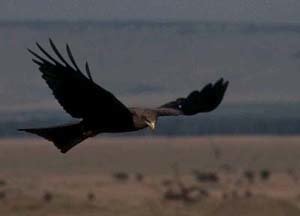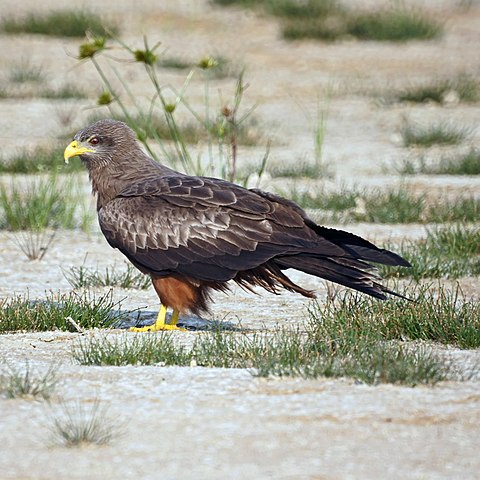It is a common migrant bird in Africa that floats gently in the sky during the summer months. In winter, they migrate yearly in central-east Africa. It is arguably the most visible bird of prey in the African continent, searching and catching frogs, rodents, and insects, though it may also rely on scavenging much of the days.
Read further to know more about the Yellow-billed Kite.
What is a Yellow-billed Kite?
The Yellow-billed Kite (Milvus aegyptius) is the Eurasian Black Kite counterpart in the African tropics. It is one of the most common raptors spread throughout the continent and even visible in urban locations. They can be found nearly anywhere, but are more common outside of protected areas with less competition for food source from other raptors. It produces a call regarded as a piercing cry with wattling.
Its seven levels of classification are as follows:
Kingdom: Animalia
Phylum: Chordata
Class: Aves
Order: Accipitriformes
Family: Accipitridae
Genus: Milvus
Species: M. aegyptius
Yellow-billed Kite Physical Description
Yellow-billed Kites are medium-sized birds of prey, growing at an average length of 22 inches to 55 centimeters and weighing around 730 grams. It has a wingspan span of nearly 6 feet. Females are slightly larger than males.
It has an all-brown plumage, but its head is often a lighter grayish-brown color. Its tail is forked, seemingly like a kite, though it does not occur to all birds from the species. What easily recognizable about the bird is its conspicuous yellow bill, making it easy to spot in the field.
Where can they be spotted?
Yellow-billed kites thrive in grasslands, forested landscapes, open areas, and even locations is altered by human activities, such as towns, villages, and agricultural fields. It flies in low altitudes, looking for food, and will take advantage of burnt lands where prey is easier to catch or go on the roadsides to consume carrions from kills of land predators.
It is an intra-African bird but may reside in tropical areas near the equator. They only migrate when their original territories have different seasons. They usually arrive in southern Africa in August just before the first rain and then leave again in March or April after the last rain.
Interesting Facts You Should Know About the Yellow-billed Kite
Yellow-billed Kites mainly feed on any small creature, which is enough for them to catch and consume, such as small reptiles, mammals, insects, and even other birds. Scavenging is also a part of their diet, eating carrion from time to time. They also eat human scraps, and there are instances when they snatch snacks out of a person’s hand.
These birds are tenacious flyers, boosted by their specialized tails that aids them with their stability and direction. They can catch prey while in flight, as they can go for both accelerated and sudden speed bursts. Yellow-billed kites have a bold demeanor, brave enough to challenge other birds of prey and steal their meals.
Yellow-billed kites are pretty sociable and are spotted in large numbers when there is a surfeit in food. While they are not territorial, some pairs tend to nest away from the group, and their population loosens during the breeding season.
Sticks, twigs, small bones, and plastics are common nest materials, building their nest on ledges, pylons, tree branches, and even buildings. The females lay two to three eggs, which she solely incubates for about a month. All their juveniles are meant to survive, meaning competition does not exist among the siblings. The yellow-billed kites chicks will go out of the nest after 6 to 8 weeks, but will still rely on their parents for another 2 to 7 weeks.
WILDLIFE PARKS AND RESERVES WHERE THIS SPECIES IS FOUND:
BOTSWANA
SOUTH AFRICA
Kalahari Gemsbok National Park
NAMIBIA
ZAMBIA
ZIMBABWE
BOTSWANA BIRDS | SOUTH AFRICA BIRDS
NAMIBIA BIRDS | ZAMBIA BIRDS | ZIMBABWE BIRDS


